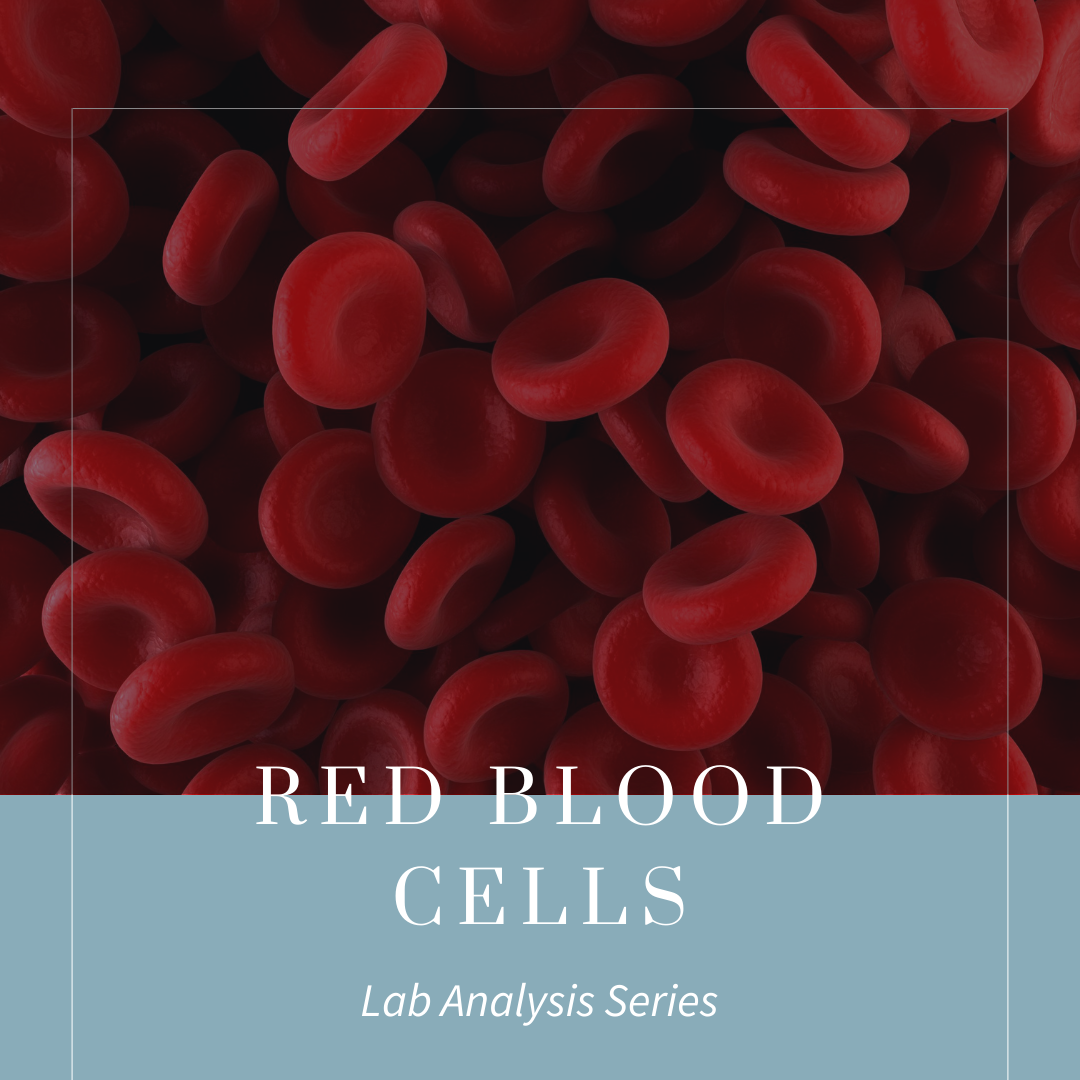Total Red Blood Cell Count (RBC) TestThe Blood Cell Count (RBC) measures the total number of red blood cells in a blood sample. It is part of the complete blood count (CBC). Erythropoiesis (red blood cell formation) takes about 1 week to complete. There are multiple steps in the formation of red blood cells and each of the steps are influenced by or governed by hormones and nutrients. In the first phases of RBC production, erythroblast cells look like all other cells in the body with a nucleus and organelles. During this phase of development iron is accumulated as ferritin and the other components of hemoglobin are synthesized. Issues in RBC formation may be associated with dysfunction in the early phases of development. Most of the hemoglobin production occurs in the early phases of RBC development. 35% of hemoglobin synthesis occurs in young RBCs called reticulocytes. The process of making RBCs is stimulated by Erythropoietin (EPO) which in turn is stimulated by hypoxia in cells, and iron concentrations. RBC values are used to assess different types of anemia. Anemia is complicated and most of the concentration of diagnosis and treatment is centered around iron deficiency and iron supplementation. Several nutrients and hormones play into the production and function of RBCs. It is important to not narrow the focus of treatment to isolated iron supplementation. There are cases and presentations of anemia without iron deficiency, and supplementation with iron may cause a more severe presentation of anemia, or other complications in pregnancy. Correct differentiation and treatment are crucial to pregnancy and childbirth success. Certain patterns in the CBC will give you clues to underlying etiology of anemia or other complications. For more information on anemia in pregnancy, please refer to chapter 9 of my book “Functional Maternity – Using Functional Medicine and Nutrition to Improve Pregnancy and Childbirth Outcomes.” Red Blood Cells in PregnancyRed blood cell production increases by 35% starting at 20 weeks gestation. Due to changes in hemodilution, total RBC counts do not increase and may show a decrease in blood work. Changes may depend on birth experience. There is a slight decrease in counts due to the normal blood loss of pregnancy. Immediately after delivery, plasma volume decreases because of diuresis, and the blood volume returns to non-pregnant values. Hemoglobin and hematocrit increase consequently. Plasma volume increases again two to five days postpartum. Later, it again decreases. There is a slight increase in RBC counts in those living above 5,000 ft. High Red Blood Cell Counts in PregnancyThere is limited data on the implications of high red blood cell counts in pregnancy. The majority of research is centered around hemoglobin and hematocrit values. Causes of High Red Blood Cell Count in Pregnancy
Low Red Blood Cell Count in PregnancyDue to hemodilution, lower RBC count may be a normal presentation depending on gestational age. It is important to look at all complete blood count values, not just the RBC. Causes of Low Red Blood Cell Count in Pregnancy
Want to Know More...Copyright © 2024 Functional Maternity, all rights reserved. The content in this article is not intended to be a substitute for professional medical advice, diagnosis, or treatment. Always seek the advice of your physician or other qualified health provider with any questions you may have regarding your medical condition.
0 Comments
Leave a Reply. |
Hi There!I'm Sarah Thompson, the author of Functional Maternity, and the upcoming book Beyond Results - A practitioner's Handbook to Effective Functional Lab Analysis in Pregnancy. Lab Tests
All
|


 RSS Feed
RSS Feed